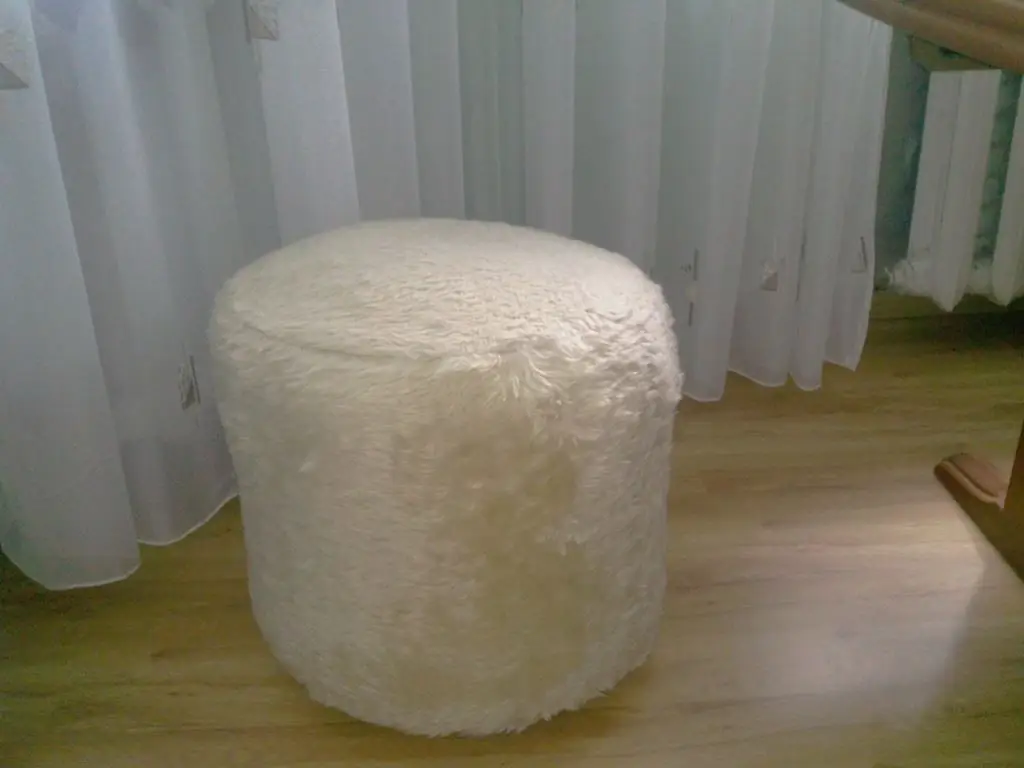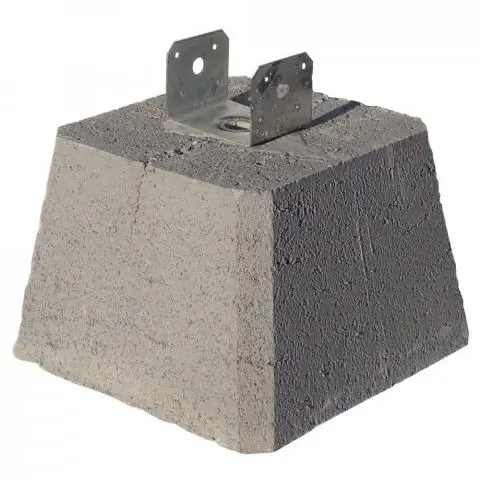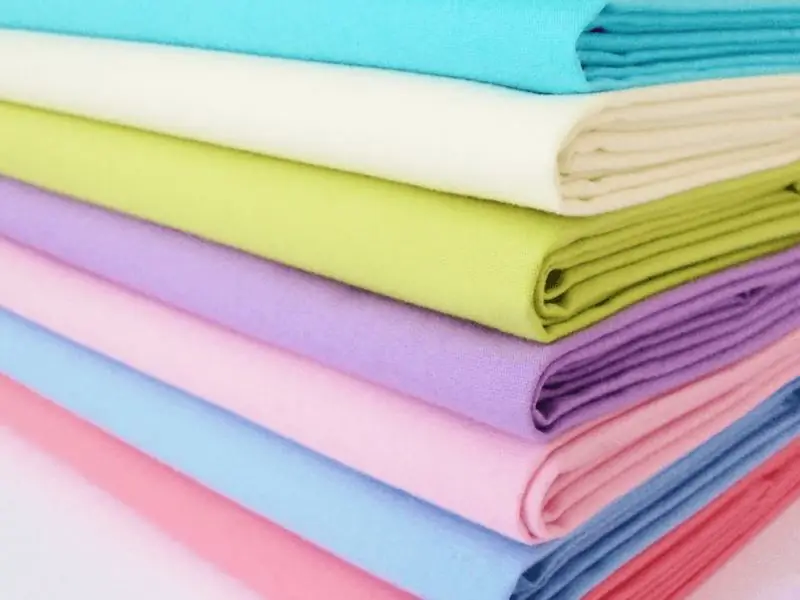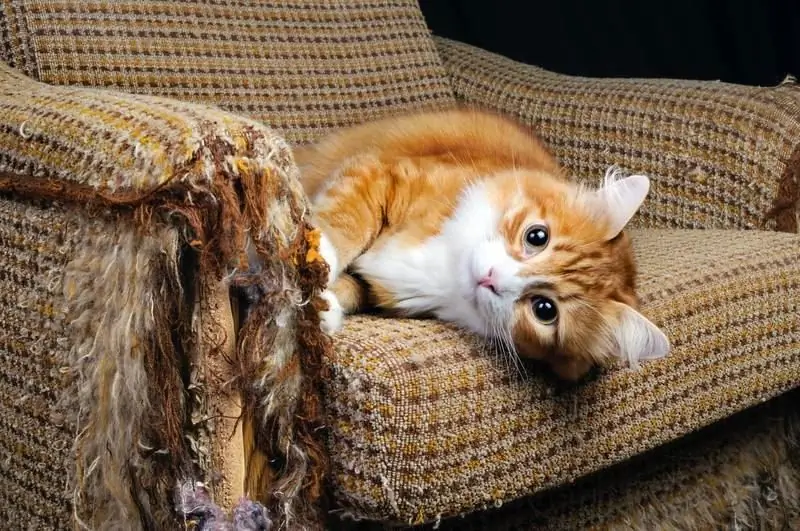
Table of contents:
- How to make an ottoman with your own hands: a master class on making a stylish piece of furniture
- Soft ottomans: simple and easy from what is at hand
- An even simpler scheme for making an ottoman
- We use available means: an ottoman made of plastic bottles
- A new look at old things: making furniture out of clothes
- Non-standard solutions in the manufacture of ottomans
- Complicating the task: a wooden ottoman with a box for all sorts of little things
- DIY video about creating an ottoman
- Author Bailey Albertson [email protected].
- Public 2023-12-17 12:53.
- Last modified 2025-01-23 12:41.
How to make an ottoman with your own hands: a master class on making a stylish piece of furniture

Sometimes you really want to update the interior, give it a new style, and additional pieces of furniture will become the most suitable helpers in this matter. And if it is easier to buy a wardrobe or sofa in a store, then making an ottoman with your own hands is very simple.
Ottomans came to us from the East many centuries ago, and immediately gained popularity. In the recent past, they occupied an important place in urban apartments with a small footage, since they simultaneously served as a table, an armchair, and a footrest.
Homemade ottomans have a lot of advantages over store-bought ottomans. You can choose the appropriate shape, size, color and type of material. In addition, in the manufacture of such a ottoman, you can use any available means, and such a piece of furniture will cost you almost free.
Content
- 1 Soft ottomans: simple and easy from what is at hand
- 2 An even simpler scheme for making an ottoman
- 3 We use available tools: an ottoman made of plastic bottles
- 4 A new look at old things: we make furniture out of clothes
- 5 Non-standard solutions in the manufacture of ottomans
- 6 Complicating the task: a wooden ottoman with a box for all sorts of little things
- 7 Video about creating a ottoman with your own hands
Soft ottomans: simple and easy from what is at hand
When starting to make an ottoman, tune in to the fact that you can handle such a simple and easy job without much worries, and we will help you with practical recommendations and advice. You will need:
- Sewing machine;
- The cloth;
- Stuffing material;
- Paper to apply the pattern to.
First, prepare a pattern using the diagram below. Lines B and C on it indicate the places where the paper is folded. It also shows what the expanded template will look like.

-
- Take the unwrapped template and attach it to the fabric. You will need to cut 8 identical fabric blanks. To avoid wasting money on new material, use old clothes.
- On each workpiece, bend a sharp corner inward by 5-6 cm and sew so that after assembling the pouf, an octagonal hole remains in the upper part, into which the padding will be placed.
- Stitch the workpieces from the inside out in pairs to each other (during cutting, do not forget to leave a seam allowance of 1 cm over the size of the pattern). Thus, you will get 4 parts from 2 blanks, stitched together on one side.
- Sew in 2 pieces in the same way: these will be two halves of your pouf. Tie them together and turn the cover inside out.
- Fill the finished pouf cover with the selected material (it can even be scraps of fabric). Cut another piece to fit the remaining hole, finish over the edges and sew by hand.

This ottoman is very soft and light, small children will be happy to play with it, and you may not worry about their safety.
An even simpler scheme for making an ottoman
There is not always the time and desire to tinker with patterns, so we offer you another, very simple option.
- Cut 2 circles out of the fabric. Their diameter should be equal to the diameter of the top and bottom of the product. Don't forget to leave seam allowances!
- Now cut 2 rectangular pieces of the same size. Their width will be the height of the pouf, and their length will be half the circumference of the top and bottom.
- Sew the rectangular parts together in width on one side to make a long ribbon. Baste one of the circles to it and sew along the seam. Do the same with the second circle. If the seam is not even or neat enough, you can trim it with decorative trim.
Thus, you quickly and easily make a cover for a pouf that can be easily stuffed with any suitable material. It remains only to sew the zipper into the unstitched edges of the rectangular tape.

In the same way, you can make a cube-shaped pouf. The only difference is that the pieces have to be square, and the sides will need four fabric pieces, not two. Stitch the details together, and in order to more clearly define the edges of the cube, use a canvas in a contrasting color. The denser fabric will give extra strength, elasticity and help to keep the shape.
Make the hole through which you will place the padding on the bottom of the pouf so that it is invisible. If you wish, you can sew it tightly after the pouf is stuffed, or sew in a zipper so that you can replace the material if necessary.
We use available means: an ottoman made of plastic bottles
This option will allow you to significantly save on padding materials. The filling of the inner space of the ottoman is provided with plastic bottles. So, you will need to stock up on the following:
- Plastic bottles of the same shape and volume;
- Thick cardboard (use cardboard boxes, just make sure they are not damaged);
- Foam rubber or synthetic winterizer (you can also use insulation or several layers of dense fabric);
- Scotch;
- Glue;
- Scissors.
Cut out two identical circles of the diameter you need from cardboard - these will be the top and bottom of the ottoman. Place the bottles on the bottom circle so that they fill the entire space and tie them tightly with tape. Cover with the top circle and rewind with tape again so that all the parts are evenly and firmly connected to each other.
The base is ready, now we start finishing the ottoman.
- From insulation (foam rubber, padding polyester), cut out two circles and a rectangle. The details should be slightly larger than the base elements, taking into account the seam allowances. Join them together and sew by hand with tight stitches.
- Sew the cover for your ottoman according to the same principle as in the second paragraph of this article.
- You can add an additional functional element in the form of a strap to the finished product. It will make it easier to carry and will certainly appeal to children who will be happy to carry such an ottoman with them as a toy.
- If you plan to make an ottoman that you will use yourself, take a thicker fabric for the cover and sew in a border at the seams. For a children's ottoman you will need soft material with variegated colors. It is advisable to use a thicker foam rubber layer.

This ottoman is not only simple to design. By making it yourself, you will save yourself from the need to dispose of plastic bottles, and this is already an excellent reason to take part in the fight for a cleaner environment!
A new look at old things: making furniture out of clothes
This is not a fairy tale or fiction, an old sweater can really turn into an original ottoman, not only very comfortable, but also a noticeable element of the interior. It is very easy to make such a piece of furniture, because the main condition is an original, bright, beautiful or funny pattern on a sweater that you will use in your work.
So, you will need:
- A sweater that you will no longer wear, but it is a pity to throw it away;
- Scissors;
- Thread and needle;
- Felt;
- Cover fabric (lining material is perfect);
- Styrofoam for stuffing.
Cut out the bottom of the ottoman in a round or square shape from the felt. This part will serve as a primary blank. Take a sweater and turn the sleeves inside, sew the remaining holes with an even seam. Sew the felt blank to the bottom of the sweater to make a bag-cover.

Now you need to prepare a cover from a dense lining fabric for styrene foam. If your primary blank is made of felt of a round shape, then you will need one piece of fabric of the required size (for example, 50 cm wide and 70 cm long), but if you decide to make a square ottoman, then calculate the required dimensions for four parts.
Sew all the pieces together, and leave a hem on top for the lace to tighten the lace after filling it with padding. Fill the cover with styrene foam after placing it inside the sweater. Tighten the lace as tight as possible so that the filler does not wake up, straighten the sweater and enjoy your new interior item!
Non-standard solutions in the manufacture of ottomans
Soft ottomans can be of any shape, even spherical. It will be just a great option for the nursery, which will become one of your child's favorite toys.
The ottoman ball is easy enough to make yourself, for this you will need:
- Sewing machine;
- Threads;
- Needle;
- Scissors;
- High density fabric, two colors;
- Graph paper for drawing up patterns;
- Polyethylene;
- Silicone filler in the form of balls.
The process of creating an ottoman ball consists of the following stages:
-
- First of all, you need to make a pattern on graph paper, observing the required dimensions. To make it easier, use a round object, such as a large balloon or a lamp shade for a floor lamp. Measure its circumference, and divide the resulting size in half. Divide this number into 5 parts so that 3 middle and 2 extreme are the same size. You will get the diameter of the base in the form of a circle and the width of the stripes that make up the ball-shaped ottoman cover.
- Transfer the resulting markings to the object that you have selected, starting with the part in the form of a circle. Draw the next line below the previously calculated bandwidth.
- Take a plastic bag, cut one side at a time, and cut off the bottom. Spread and place on the marks of the first strip, secure the edges with tape. Transfer a quarter of the strip to polyethylene and cut. Prepare the part of the middle strip in the same way. Transfer the parts to graph paper before cutting.
- Now the details of the ottoman need to be cut out of the fabric of two colors, leaving 1 cm for the seam allowance. Stitch them into stripes, leaving one side unstitched, and smooth with an iron.
- Attach the first strip to the round piece. The ends of the strip should fit exactly to each other. Stitch them and join the round base with the strip with a seam, stepping back 1 cm from the edge.
- Sew a similar blank for the opposite side of the cover and stitch to the middle strip. In this case, do not overstretch the ends of the middle strip. In the same way, grind the second half-round workpiece with the middle strip and iron the seams.

The cover for the ottoman ball is ready, you just have to fill it with filler. To keep the shape elastic, add small pieces of foam rubber inside. Close the hole with a blind seam.
Complicating the task: a wooden ottoman with a box for all sorts of little things
If you have the skills to work as a carpenter, then you can easily make a fairly simple, but very beautiful and functional ottoman with a wooden box on wheels. This ottoman can be used to store toys, magazines, shoes or clothes. For it you will need:
- laminated board or chipboard sheet for making a circle with a diameter of 30 cm and 4 rectangles 40 X 33 cm;
- 4 wooden beams with dimensions 4 x 8 x 8 cm;
- PVA glue;
- furniture wheels - 4 pcs;
- metal corners - 4 pcs;
- self-tapping screws;
- screwdriver (screwdriver, drill);
- foam rubber for stuffing;
- fabric for cover design;
- sewing machine.
Take the chipboard slabs prepared by the dimensions and connect them to make a box 40 x 40 cm wide and 30 cm high. Additionally coat the joints with glue.
Place wooden blocks on the bottom corners of the box. Fasten them with self-tapping screws, covering them with glue for a more secure attachment. Attach furniture wheels to these blocks. Install the cover with glue and self-tapping screws.

The frame of the ottoman is ready, now you need to sew the cover. Take a special furniture fabric, it wears out less. In the shape of the cover, cut out the top of the cape, and sew a 10 cm strip of fabric along the contour. Here you can also add ruffles, drapery, canvas to your taste.
Place a layer of foam on the cover of the ottoman to ensure softness. Pull the cover on top. For its implementation, you can use any fabrics and decorative elements.
DIY video about creating an ottoman
As you can see, it is very easy to make an ottoman with your own hands, and the photos that we have posted in this article will help you. Share with us in the comments your experience in making such pieces of furniture, and we will be happy to discuss with you all the subtleties and features of such work! Comfort for your home!
Recommended:
How To Get Rid Of Humidity And Dampness In An Apartment Or House, As Well As From The Accompanying Smell, How To Eliminate It And Useful Tips

Dampness and fungus in an apartment and a private house. The reasons for the appearance of excessive moisture, condensation, mold and how to eliminate them. Preventive measures. Instructions
How To Choose And Build A Foundation For A Bath With Your Own Hands - 4x6, 3x4 And Other Sizes, Tips, Instructions, Photos And Videos

How to make a foundation for a bath with your own hands. Types and features of foundations. The choice of materials and technology, installation rules and step-by-step instructions
How To Sew Diapers For A Newborn With Your Own Hands - A Cocoon, With Velcro, Zippers And Other Options: Sizes, Patterns And Useful Tips

What kind of diapers is needed for a baby in the first months of life, detailed MC for their manufacture, help in choosing a material, tips and videos
How To Arrange A Doorway Without A Door To The Kitchen: Photos, Original Solutions, Useful Recommendations

How to create a doorway without a door and kitchen design features. What to consider when designing and how to choose materials. Opening decor rules without a door
How To Wean A Cat And A Cat To Tear Wallpaper And Furniture, Features Of Weaning Kittens And Adult Animals, Useful Tips And Tricks, Reviews

Why does a cat tear wallpaper and furniture? How to prevent damage to property. What to do if you can't wean your cat
